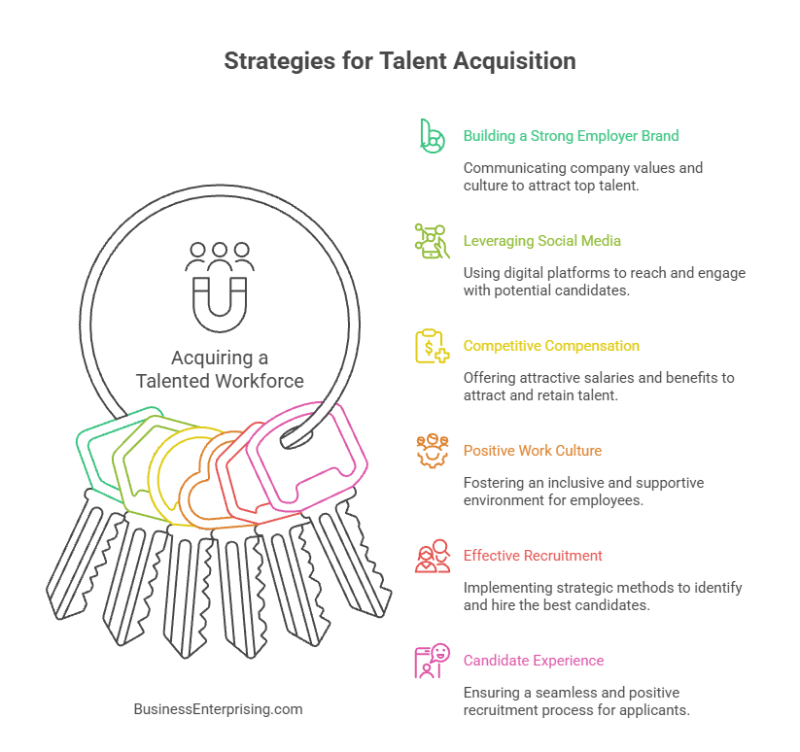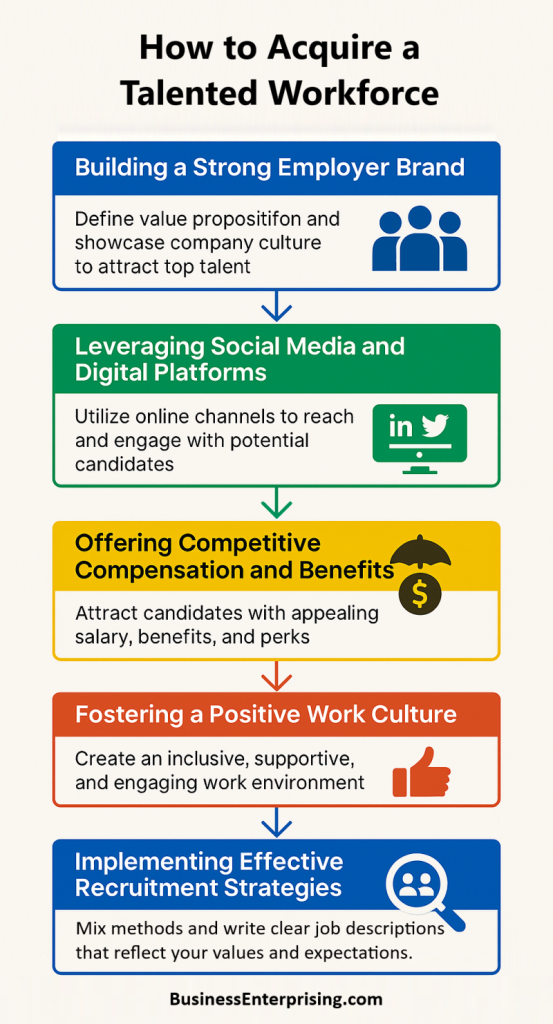
Building a Strong Employer Brand
One of the most effective ways to attract top talent is by building a strong employer brand. A compelling employer brand communicates the company’s values, culture, and mission, making it an attractive place to work. To build a robust employer brand, companies should start by clearly defining their unique value proposition. This involves understanding what sets the organization apart from competitors and what makes it a desirable place to work. Highlighting these attributes in all communications helps create a positive image that resonates with potential candidates.
Moreover, showcasing employee testimonials and success stories can provide an authentic glimpse into the company’s culture and work environment. Sharing these stories on the company’s website and social media can humanize the brand and create an emotional connection with potential candidates. Additionally, participating in community events, industry conferences, and other public forums can enhance the company’s visibility and reputation, making it more appealing to top talent.
Leveraging Social Media and Digital Platforms
In the digital age, social media and online platforms can play a crucial role in acquiring a talented workforce. Companies can leverage these channels to reach a wider audience and engage with potential candidates. Posting job openings on popular social media platforms like LinkedIn, Facebook, and Twitter can attract a diverse pool of applicants. Additionally, using these platforms to share company news, culture highlights, and industry insights can build a strong online presence that appeals to job seekers.
Engaging with potential candidates on social media can also help build relationships and foster interest in the company. Responding to comments, participating in discussions, and sharing valuable content can create a sense of community and demonstrate the company’s commitment to open communication and engagement. Furthermore, utilizing digital recruitment tools, such as applicant tracking systems (ATS) and recruitment marketing software, can streamline the hiring process. These tools can help manage applications, track candidate progress, and analyze recruitment metrics. Doing so enabling companies to make data-driven decisions and optimize their recruitment strategies.
Offering Competitive Compensation and Benefits
To attract top talent, companies must offer competitive compensation and benefits packages. Salary is a significant factor in job seekers’ decisions, but it is not the only consideration. Comprehensive benefits packages that include health insurance, retirement plans, paid time off, and wellness programs can significantly enhance the company’s appeal. Additionally, offering flexible work arrangements, such as remote work options and flexible scheduling, can attract a broader range of candidates.
Regularly reviewing and adjusting compensation and benefits packages to align with industry standards is essential for staying competitive. Conducting salary benchmarking and employee satisfaction surveys can provide valuable insights into what employees value most. By demonstrating a commitment to employee well-being and offering attractive compensation and benefits, companies can position themselves more favorably.
Fostering a Positive Work Culture
A positive work culture is a critical factor in acquiring a talented workforce. Companies with a supportive, inclusive, and collaborative work environment are more likely to attract skilled professionals who seek meaningful and fulfilling work experiences. To foster a positive work culture, companies should prioritize open communication, recognition, and employee development.
Encouraging open communication and transparency can help build trust and create a sense of belonging among employees. Regularly soliciting feedback through surveys, meetings, and informal conversations can provide insights into employee concerns and areas for improvement. Recognizing and rewarding employees’ contributions can boost morale and motivation, creating a positive and engaged workforce. Implementing employee recognition programs, offering performance-based incentives, and celebrating milestones and achievements can reinforce a culture of appreciation and support.
Furthermore, investing in employee development and growth opportunities can enhance job satisfaction and loyalty. Providing access to training, workshops, and career development programs can help employees acquire new skills and advance their careers within the company. Creating clear career paths and offering mentorship programs can also support employees’ professional growth and contribute to a positive work culture.
Implementing Effective Recruitment Strategies
Effective recruitment strategies are essential for attracting top talent. Consider developing a comprehensive recruitment plan that outlines the steps and processes for identifying, attracting, and hiring the best candidates. This plan should include a mix of sourcing methods, such as job boards, social media, employee referrals, and recruitment agencies, to reach a diverse pool of candidates.
Crafting compelling job descriptions is also crucial for attracting the right candidates. Job descriptions should be clear, concise, and highlight the key responsibilities, qualifications, and benefits of the role. Emphasizing the company’s unique value proposition and culture can make the job listing more appealing and attract candidates who align with the company’s values.
In addition to traditional recruitment methods, companies can explore innovative approaches to talent acquisition. For example, hosting virtual career fairs, participating in industry events, and collaborating with educational institutions can provide opportunities to connect with potential candidates and showcase the company’s brand. Developing relationships with universities and colleges can also help companies identify and attract emerging talent through internships, co-op programs, and campus recruitment initiatives.
Enhancing the Candidate Experience
The candidate experience plays a significant role in attracting top talent. A positive and seamless recruitment process can leave a lasting impression and increase the likelihood of candidates accepting job offers. Companies should ensure that the application process is user-friendly, efficient, and transparent. Providing timely and clear communication throughout the recruitment process can keep candidates engaged and informed.
Conducting structured and well-organized interviews can also enhance the candidate experience. Interviewers should be trained to ask relevant questions, provide meaningful feedback, and create a welcoming environment for candidates. Additionally, offering virtual interview options can accommodate candidates’ preferences and provide flexibility.
Following up with candidates after interviews and providing constructive feedback, regardless of the outcome, demonstrates respect and professionalism. Maintaining a positive relationship with candidates who were not selected can also be beneficial for future recruitment efforts, as they may consider the company for future opportunities or refer other qualified candidates.
Conclusion
Acquiring a talented workforce is a multifaceted process that requires a strategic and holistic approach. By building a strong employer brand, leveraging social media and digital platforms, offering competitive compensation and benefits, fostering a positive work culture, implementing effective recruitment strategies, and enhancing the candidate experience, companies can attract and retain the best talent in the market.
In conclusion, prioritizing talent acquisition and investing in employee satisfaction and development are essential for achieving long-term success and growth. As the business landscape continues to evolve, staying attuned to the needs and preferences of the workforce will remain key to building a talented and motivated team. By implementing these strategies, companies can create an environment that attracts top talent, drives innovation, and supports sustained success.


